Sustaining Value
 According to Deloitte, life-sciences companies are evolving their business models from product development through manufacturing and distribution, to move “beyond the pill" and to engage more fully with providers and patients throughout the product lifecycle and “transform what is possible." Recent figures indicate these efforts may be starting to pay off. The current net present value (NPV) of the pharma sector’s pipeline surged 46% from 2013 to 2014, to an estimated total of $418.5 billion in potential future revenue. However, R&D expenditures are forecast to grow just 2.4% between 2013 and 2020, reaching $162 billion, below sales growth and continuing the industry’s balancing act between fostering innovation and containing costs. In time, the benefits of new business models may also become apparent in more macro measures, such as total shareholder return (TSR).
According to Deloitte, life-sciences companies are evolving their business models from product development through manufacturing and distribution, to move “beyond the pill" and to engage more fully with providers and patients throughout the product lifecycle and “transform what is possible." Recent figures indicate these efforts may be starting to pay off. The current net present value (NPV) of the pharma sector’s pipeline surged 46% from 2013 to 2014, to an estimated total of $418.5 billion in potential future revenue. However, R&D expenditures are forecast to grow just 2.4% between 2013 and 2020, reaching $162 billion, below sales growth and continuing the industry’s balancing act between fostering innovation and containing costs. In time, the benefits of new business models may also become apparent in more macro measures, such as total shareholder return (TSR).
We asked our experts if they are redefining their business to sustain value, and if so how?
Oliver. Otsuka.
We are redefining our business to sustain value by offering more to patients, caregivers, and healthcare professionals than medicines alone. In today’s environment, meaningful value is a prerequisite. Thus, we are moving forward with innovative ideas such as digital solutions that have the potential to enable improved outcomes in terms of patient health and utilization of resources.
Connor. MicroMass.
Pharma has recognized that an important success metric is patient outcomes, and the way to achieve optimal outcomes is through evidence-based behavioral solutions. This aligns with our core values and principles that originated 25 years ago: achieving outcomes requires more than the traditional marketing approach. It needs a specialized, evidence-based approach that actively shifts attitudes, builds skills, and changes behavior. Our approach remains extremely relevant to pharma. We provide solutions to change patient and provider behavior by using evidence-based strategies from health psychology and behavioral science. While we aren’t redefining our business to sustain value, we are constantly refining our service offerings so that they deliver more of an impact for our customers. The field of behavioral science is constantly evolving.
Benton. Worldwide Clinical Trials.
We do not see any need to redefine our business, but we are redoubling our efforts to clarify and focus our strategy. The small- to mid-size pharma biotech market that we serve is robust and growing. The therapeutic areas we focus on — immune mediated 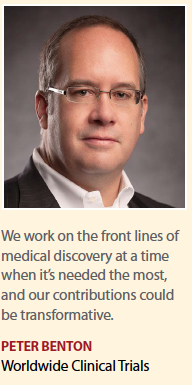 inflammatory disorders, cardiovascular, and CNS — are seeing new and innovative therapies. Rare diseases and orphan indications are strong and the market appears to crave a CRO partner — one whose people care deeply about what they do, who can deliver world-class scientific, medical and clinical development expertise, combined with good old-fashioned operational delivery and customer service. We work on the front lines of medical discovery at a time when it’s needed the most, and our contributions could be transformative. The market is strong and the future is bright. Our plan for 2017 is to continue our market and therapeutic areas of focus and not get distracted — the key is focus, care, and delivery.
inflammatory disorders, cardiovascular, and CNS — are seeing new and innovative therapies. Rare diseases and orphan indications are strong and the market appears to crave a CRO partner — one whose people care deeply about what they do, who can deliver world-class scientific, medical and clinical development expertise, combined with good old-fashioned operational delivery and customer service. We work on the front lines of medical discovery at a time when it’s needed the most, and our contributions could be transformative. The market is strong and the future is bright. Our plan for 2017 is to continue our market and therapeutic areas of focus and not get distracted — the key is focus, care, and delivery.
Tarriff. Eagle.
We have always focused on isolating problems and discovering how drugs can be better delivered. By reformulating drugs to solve those gaps in care, we have entered the market in a way that provides value to its stakeholders. We continue to create value by expanding on multiple drug label opportunities. For example, our drug Ryanodex was FDA-approved in July 2014 for the treatment of malignant hyperthermia and the prevention of malignant hyperthermia patients at high risk. This same drug is being investigated for the treatment of exertional heat stroke and for the treatment of drug-induced hyperthermia, not yet approved by the FDA. The company also recently acquired the biotechnology firm Arsia Therapeutics, which has a technology for protein formulation. This acquisition enhances our formulation capabilities and greatly expands on product development opportunities.
Through this acquisition, we plan to partner with key biosimilar companies to alter their existing pipeline to biobetters. The biosimilar market is expected to be one of the largest and fastest-growing segments of the market.
Holland. Sudler.
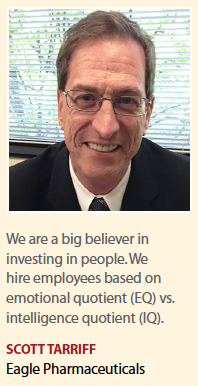 We’re not redefining our business model, because our business model could be considered evergreen. Our model is to help our clients do well. Therefore, over the years we continue to evolve our skills and offerings so we can anticipate and respond to the challenges that our clients are confronting. Our offerings, our thinking, and some of the things that we do for and with our clients change. We are always here to respond to and to anticipate their needs, whether that means becoming experts in a different disease state, adopting a new technology, mining new data, or better understanding their changing customer base.
We’re not redefining our business model, because our business model could be considered evergreen. Our model is to help our clients do well. Therefore, over the years we continue to evolve our skills and offerings so we can anticipate and respond to the challenges that our clients are confronting. Our offerings, our thinking, and some of the things that we do for and with our clients change. We are always here to respond to and to anticipate their needs, whether that means becoming experts in a different disease state, adopting a new technology, mining new data, or better understanding their changing customer base.
Macdonald. INC Research.
Driving value to customers by designing and executing trials on time and on budget are keys for us. We have developed our delivery at a fast pace with new expertise in various rapidly growing therapies. We’ve also added new execution models and technologies to increase speed and accuracy while maintaining or even lowering costs. In our industry, if a CRO doesn’t constantly look at what it does and how it could do it better, then it instantly starts to lose market share.
Scott. Zephyr Health.
We are a young and agile technology firm that helps life-sciences companies harness the power of big data to make confident business decisions. Since we are a relatively new company, rather than redefine our business to sustain value, we are doubling down on our core focus because we are well poised for continued growth. Furthermore, we continue to look for ways to extend our current solutions to adjacent customer segments. To date, we have achieved the greatest outcomes when working in lock-step with our customers; we partner closely with them to evolve our offering based upon solutions that are clearly accelerating their commercial success and to identify new areas of opportunity.
Metrics of Success
In 2015, PwC noted that the pharmaceutical industry’s long successful strategy of placing big bets on a few molecules, promoting them heavily, and turning them into blockbusters worked well for many years, but its R&D productivity had plummeted and the 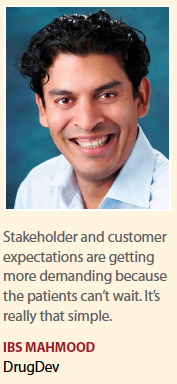 environment was changing. Today, in light of an evolving global landscape, changing stakeholder expectations, and increased pricing pressures, industry experts provide their metrics for evaluating success in their organizations.
environment was changing. Today, in light of an evolving global landscape, changing stakeholder expectations, and increased pricing pressures, industry experts provide their metrics for evaluating success in their organizations.
Oliver. Otsuka.
The obvious metrics for success are regulatory and quality compliance, which represent the cost of entry. Success is also measured by specific outcomes that are aligned with business strategy. For instance, if our strategy is to be a world leader in central nervous system disease then we measure our reach to prescribers and patients around the globe. The depth of our franchise in serious mental illness is another example.
Macdonald. INC Research.
We look at the success of our business strategy in multiple ways. We are a publicly traded company, so financial metrics are very important. But we also we carefully monitor the levels of satisfaction our employees have. We look at turnover rates in locations or positions and constantly try to improve them. We believe that creating the right environment for employees to be successful is key to our best-in-class customer service and delivery. We take care of our employees, and they work diligently to optimize our project delivery.
Mahmood. DrugDev.
We are serious about our mission — to help companies do more trials. This does not mean making incremental improvements to the bottom line with a stretch goal of sponsors being able to run three trials for the price of two. That’s simply not enough change to make a real impact on patients around the world. We’re thinking bigger. We want to help sponsors run 10 trials for the price of one.
Only then will the economics change enough so more of the promising drug candidates are tested and brought to market. So when we hear things like site activation being sped up by 25% to 50%, payments improving site satisfaction, eConsent improving patient retention, significant reductions in site failures, or site engagement strategies contributing to a three-time increase in enrollment we know we are on the right path.
Holland. Sudler.
We have our own growth targets as any company does. But I prefer to think that we measure our success by our clients’ success. We succeed when our clients succeed. And we can measure this success not just by how their brands are doing, but by client longevity 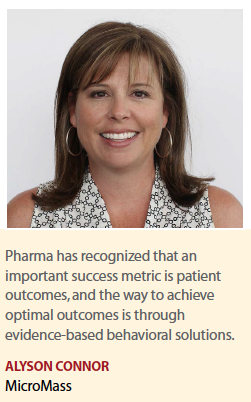 and by the breadth of activities we are providing. These two metrics tell us how well we are doing on their behalf. When our clients view us as a true business partner, and engage us to help them in a broad scope of marketing and consulting activities, to me that’s when we succeed, because that’s when they see us contributing in a truly comprehensive way to their success.
and by the breadth of activities we are providing. These two metrics tell us how well we are doing on their behalf. When our clients view us as a true business partner, and engage us to help them in a broad scope of marketing and consulting activities, to me that’s when we succeed, because that’s when they see us contributing in a truly comprehensive way to their success.
Stakeholder Expectations
McKinsey has noted that the definition of value will be much broader and will expand as the types of healthcare stakeholders who demand a demonstration of value increase. At the same time, there will be an increased focus on evidence and higher hurdles for proving product value. C-suite executives across the spectrum provide their take on how their customer/stakeholder expectations are changing.
Macdonald. INC Research.
While expectations have changed over time, there is a constant focus on time and budget delivery. Customers expect the CRO to have the expertise to design a study and then forecast its completion accurately. We still don’t always get that right, and although the majority of delays are external influences, customers more and more expect those to be anticipated, which is not always possible. But as we use better data, analysis, and technology, I think we are increasingly accurate.
Oliver. Otsuka.
Patients, prescribers, and other stakeholders are experiencing many pain points today as a result of the rapidly evolving U.S. healthcare environment. For example, pressures on time and other resources are causing stress for healthcare practitioners. If they are going to deliver better patient outcomes in a post fee-for-service world, then real innovation is required to make the most of those limited resources, such as better communication with patients and better management of patients’ treatment plans. After all, every stakeholder in the healthcare ecosystem has a common mandate to improve patient outcomes at a reasonable cost. Our response is to first listen intently to our customers. The voice of the customer is the genesis of strategy development and the activities that follow. Moreover, we are working to eliminate those things that don’t add value for our customers so that we can focus our investments in meaningful ways that will meet our customers’ changing expectations. We are proud of our agility, that is, our capacity to shift quickly as needs and expectations change.
Mahmood. DrugDev.
Stakeholder and customer expectations are getting more demanding because the patients can’t wait. It’s really that simple. I believe all providers, including DrugDev, have a responsibility to fix the mistakes of historic technology initiatives that have resulted in 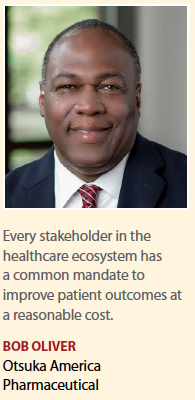 today’s environment of disparate systems that don’t speak to each other, are unwieldy for sites to use, and provide little value to the people running clinical trials. They agree it is time for a change, and the sense of urgency is tangibly growing especially as a younger generation of clinical professionals begins to take over leadership roles. The demands for clinical systems to catch up to or exceed consumer technology have never been louder, and we welcome this change with open arms.
today’s environment of disparate systems that don’t speak to each other, are unwieldy for sites to use, and provide little value to the people running clinical trials. They agree it is time for a change, and the sense of urgency is tangibly growing especially as a younger generation of clinical professionals begins to take over leadership roles. The demands for clinical systems to catch up to or exceed consumer technology have never been louder, and we welcome this change with open arms.
Connor. MicroMass.
Our customers are realizing that changing behavior is what will change their business. Clients are more likely to embrace the evidence-based strategic process and understand the science behind shifting attitudes, building skills, and changing behavior. By implementing behaviorally based programs and initiatives, brands are seeing that they can achieve commercial success and improve patient outcomes. Customers are requiring specific scientific rationale, evidence, and proof to support behavioral change solutions. Pharma brand managers are in a position to do more with less. They need proof points to sell in newer, more strategic concepts that often rival the traditional playbook. And we’re able to deliver. The behavioral science approach is no longer considered nice to have. For pharma, and specifically for our partners, it is becoming a must have. Behavioral science is now a preferred approach to accomplish brand benchmarks. Brand teams are uncovering how evidence-based solutions are constructed to change provider and patient behavior and make a difference to achieve optimal outcomes.
Torchilin. Novaseek.
All of us in life sciences and healthcare are privileged to be working in an industry that is constantly evolving and re-inventing itself to better serve patients and help them live healthier lives. Of course, the patient is always the central theme of everything that we do; however, as we move into 2017, there is a strong focus to put the real-world patient front and center in the R&D process, expanding patient interaction beyond the controlled clinical trial setting. Major initiatives announced over the past two years, including the Cancer Moonshot, the Precision Medicine Initiative, and much of the 21st Century Cures Act, are encouraging life-sciences researchers to align R&D with how the patient is presenting in the real world, as he or she moves through the daily course of life or routine course of care. The end result will be a better understanding of relevant health outcomes, unmet needs, patient clinical pathways, and treatment efficacy.
Holland. Sudler.
Our clients are in the middle of a rapidly changing world with seismic paradigm shifts and they’re looking to us to provide guidance. Obviously, the pressures on pricing that stem from the political environment are intense. So that puts pressure on us in terms of budgets. Clients want things done faster and that puts a lot of pressure on our talent. The ability to complete our work quickly, at the highest level of quality, and on time is tough; we’ve learned how to evolve our system so that there is less pressure on our people and we’ve found different ways of working and I think that’s very important. But time constraints do put pressure on the 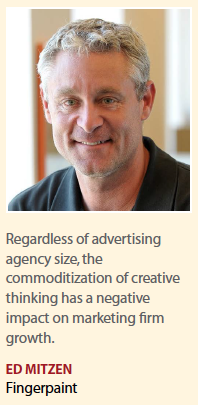 amount of time people have for reflection, and I think this is something we all have to be careful about. Our staff want and need to have time to step back and think. And our clients, while they want us to work quickly, also want us to help them with some of the really big challenges of the day, which means that the agency needs to make time for less structured and more collaborative creative and analytic ideation. Our customers are clearly asking us to do more. And our customers’ customers are putting an enormous amount of pressure on them. With patients growing more empowered, and physicians becoming more disenfranchised, we need to help brands and companies establish themselves and deliver value in this increasingly diffuse healthcare delivery system.
amount of time people have for reflection, and I think this is something we all have to be careful about. Our staff want and need to have time to step back and think. And our clients, while they want us to work quickly, also want us to help them with some of the really big challenges of the day, which means that the agency needs to make time for less structured and more collaborative creative and analytic ideation. Our customers are clearly asking us to do more. And our customers’ customers are putting an enormous amount of pressure on them. With patients growing more empowered, and physicians becoming more disenfranchised, we need to help brands and companies establish themselves and deliver value in this increasingly diffuse healthcare delivery system.
Benton. Worldwide Clinical Trials.
Customer satisfaction and repeat business are key to our success. We talk to our customers, both the sponsors we work for, but also our sites and investigators. This can’t only be done over the phone, sitting in an office. We are out there on the front lines, listening, understanding, and adjusting to meet our customer expectations. And it isn’t just our typical front-line people who are communicating with our customers, sites, and investigators — it is our entire project teams through to the top leaders of our company, including me. With this level of engagement and awareness, it helps us quickly assess and adjust to customer expectations.
Bachenheimer. BBK Worldwide.
We continue to work to ensure that our customers have the tools and services they need to support the patient and the research in equal measure. To that end, we have developed several examples of how we and our global partner network operate.
Tarriff. Eagle.
Our company’s sole purpose and vision is to develop and produce injectable products that improve patients’ lives and efficiencies for healthcare providers. We mine the marketplace to discover what is needed, literally asking patients and healthcare providers: “What are you happy with?" “How can we improve on your treatment?" Then we go back and do it. After that — for the manufacturing, regulatory, clinical, patenting, and partnering processes — it’s a matter of know-how and hard work.
Global Impact
Clearly, the pharmaceutical industry is a global entity and responsible for the development, production, and marketing of medications around the world. Thus, its immense importance as a global sector is inarguable. According to Statista, total pharmaceutical revenue worldwide reached more than $1 trillion in 2014, with North America responsible for the largest portion of this revenue, due to the leading role of the U.S. pharmaceutical industry. However, as in many other industries, the Chinese 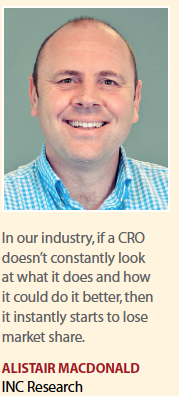 pharmaceutical sector has shown the highest growth rates over previous years.
pharmaceutical sector has shown the highest growth rates over previous years.
Macdonald. INC Research.
Global is having a major impact on the industry. So as trials have become more complex and the need to operate more globally increased, we have seen more work coming from mid-size and smaller customers, as they need a more global delivery model.
Bachenheimer. BBK Worldwide.
Globalization is not a new construct with regard to clinical trial patient recruitment and engagement. On-time enrollment is dependent upon adept multi-cultural campaigns that are designed to meet the healthcare and regulatory demands of each country in which a clinical trial is being conducted. To do just that, we have implemented three major initiatives: find and/or create best-in-class resources in North America, Asia-Pacific, Europe, and Australia, and most recently South America; create and strengthen a cloud-based technological infrastructure that establishes best practices for patient recruitment and engagement and ensures performance consistency by all alliance partners, sites, and study teams; and ensure that patient-centric innovation is the heart that beats in all initiatives across our best-in-class technologies and creative and services teams. Opening outposts or paying lip service to cooperative working relationships will not sustain global initiatives; on the contrary, these approaches are fraught with inefficiencies that have huge infrastructure costs and often slow productivity.
Oliver. Otsuka.
Globalization is having an enormous impact on our organization as not all markets behave or perform alike. And operating globally means complying with laws and regulations that differ from country to country. This has led to an emerging need for harmonization of our companies’ policies and processes in areas such as data and patient privacy, safety and pharmacovigilance, the conduct of clinical trials, and the like. The time and capital required to harmonize impacts operations on multiple levels.
Connor. MicroMass.
We are seeing an increase in requests for global behavior change programs. Clients are often tasked with developing a global strategy that can still be relevant in each market. Fortunately, behavior is studied globally. Access to decades of published research 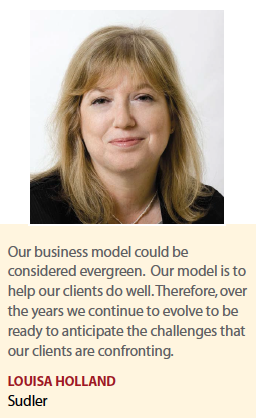 provides a roadmap to changing patient and provider behavior. Our approach is to uncover the global drivers of behavior — specifically the commonalities — and then develop a global framework for changing behavior. These solutions rely on evidence-based strategies that have demonstrated success across multiple markets.
provides a roadmap to changing patient and provider behavior. Our approach is to uncover the global drivers of behavior — specifically the commonalities — and then develop a global framework for changing behavior. These solutions rely on evidence-based strategies that have demonstrated success across multiple markets.
Business Threats and and Opportunities
Depending upon the particular sector in which our C-suite executives operate, they face any number of threats and challenges to their business operations, but in the aftermath of the 2016 election the one common denominator they all face is uncertainty as the new administration endeavors to overhaul the Accountable Care Act and the subsequent replacement, which will create ripples of challenges and opportunities throughout the industry.
Macdonald. INC Research.
The global CRO market is a very competitive space with some tough competitors in it. Every day, we compete with at least two other global, world-class CROs for every business opportunity, so ensuring our talented teams have the time and focus to put better solutions together is key. Obviously, we have had several political changes, and we are still looking to see how those play out and their impact on the R&D sector overall. But funding looks stable at the moment, which bodes well. Pricing pressure in the United States could have an impact, but we are optimistic that the CRO sector in general and INC in particular will continue to grow.
Holland. Sudler.
The biggest day-to-day challenge is to think big and create stronger ideas with less time and probably less money. We always want to do more for our clients and in today’s delivery model, with new players, new market drivers, new technology, and new metrics, this encompasses an ever-wider scope. It could entail population health data, or helping to align with retail health (“convenience health"). It could entail helping to understand why 70% of adults talk about wearables, but only 15% use them. How do we make sense of that and figure out how to leverage technology in a way that makes sense rather than just “checking a box."
Oliver. Otsuka.
The uncertainty of possible policy changes that could fundamentally change the way medicines are delivered. There are debates about importation, for one example, and decisions in that area could compromise the current integrity of IP (intellectual property) 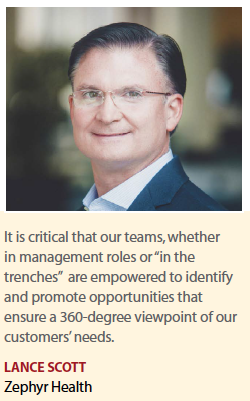 and introduce product quality risks. Moreover, patient access is another hot topic in policy discussions and those decisions could impact volume depending upon whether more or less Americans have affordable options for treatment.
and introduce product quality risks. Moreover, patient access is another hot topic in policy discussions and those decisions could impact volume depending upon whether more or less Americans have affordable options for treatment.
Mahmood. DrugDev.
Resistance to change or maintaining the status quo pose the greatest threats not only to DrugDev, but industry progress as a whole. Fortunately, I’ve never been more optimistic about the industry’s desire to embrace new solutions that make a real difference. Just look at collaborations such as TransCelerate, or the Investigator Databank before it. Not even five years ago would any of us have believed so many major pharmaceutical companies would come together to share data previously believed to be proprietary in the interest of advancing our common goals. So while the status quo may be the biggest threat, collaborations such as these make me believe we have nothing to fear on that front.
Mitzen. Fingerpaint.
Being an independent agency, we often compete against large global networks. And because many pharmaceutical clients have had to streamline their marketing staff due to increasing profit pressures, they often default to a network solution in hopes it will make things easier. This consolidation of business into large networks is continuing to be driven by procurement, which has struggled to reduce marketing and advertising costs within the pharmaceutical firms. Regardless of advertising agency size, the commoditization of creative thinking has a negative impact on marketing firm growth. However, fresh ideas and innovative solutions are being solicited by all types of pharmaceutical manufacturers, and these ideas can come from any size shop. Pharmaceutical marketing departments have seen a small 30-person advertising firm create Pepsi’s Super Bowl ads. They understand that it’s talent that matters, and that can reside in any size advertising firm.
Technology and Innovation
Generating top-line and bottom-line growth lies at the heart of any organization’s ability to deliver shareholder value. According to PwC, leading companies today recognize that innovation is critical to delivering consistent business results in all economic conditions. The speed of change in the new economy has reinforced the value of innovation and to be competitive in the global marketplace, organizations need to deliver new products, services and even business models to market quickly, reliably, and cost effectively.
Oliver. Otsuka.
We are adopting technology in both the clinical and commercial arenas, which yields benefits in both time and quality. Innovation is in our company’s DNA, which means we reject conventional approaches to drug development and commercialization. We choose the path that requires perseverance and the courage to plow new ground. We are leading the way in eClinical trials and digital medicine — to date we have the only regulatory filing in the industry for a potential digital medicine that has been accepted for review. We have more work to do to gain approval, and we will persevere.
Bachenheimer. BBK Worldwide.
Innovation is not a flash in the pan; it’s an ongoing necessity. We are an important stakeholder in the clinical trial industry having introduced many of the techniques and constructs that now define the patient recruitment industry. But, medical science does not stand still, and nor can the services that support consumer access to scientific advances. You must have a technological base. BBK’s 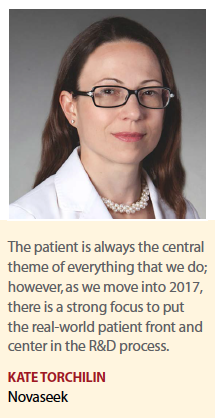 TrialCentralNet is a Patient Recruitment Management System that offers the ability for robust reporting, enrollment process efficiency, and reimbursement and travel support all through one portal. And, it is designed to easily integrate with other key study software systems.
TrialCentralNet is a Patient Recruitment Management System that offers the ability for robust reporting, enrollment process efficiency, and reimbursement and travel support all through one portal. And, it is designed to easily integrate with other key study software systems.
Macdonald. INC Research.
We have been a leader in the use of data and technology for a long time, and we partner with advanced technology companies in the sector. We have continued to add novel ways to deliver our work through their technologies. There’s been a lot of talk recently about data from a few CROs, but we have been using the types of data they are discussing for a long time. We have used that data to find and engage sites and patients for many years, but we will need to adapt as more people bring that approach. We have recently added several new data streams to help fine-tune enrollment, as well as rolling out newer versions of the technology we use to move our transparency to a new level with our customer. So we will keep moving our tech and data innovations as rapidly as we can, because we have to stay one step ahead of the pack.
Torchilin. Novaseek.
The critical component of our value proposition is to provide our customers — scientist and clinical researchers — an intuitive user experience. We believe that direct interaction of a researcher with clinical data increases the productivity and clinical significance of the R&D process. Both the IT and pharmaceutical industries are moving toward cloud-based solutions such as ours. As we continue to connect our research customers to biologically enhanced real-world data, we take care to stay close to our customers and keep our finger on the pulse of what’s important to ensure that our solution is meeting their needs.
Mitzen. Fingerpaint.
It became clear to us two years ago that to serve our clients in the best possible fashion, we not only needed to develop clear, breakthrough positioning and creative, but we also had to provide technology solutions to get those stories in the hands of customers. As such, we are building products to supplement our traditional advertising services. These products range in complexity from large cloud-based marketing applications to SMS video systems. We recently launched an innovation division called The Perpetual Ideation Machine, which resides in Columbus, Ohio, and is composed of technologists, researchers, designers, UX strategists, video storytellers, analytics, and creatives.
Talent Strategies
Technology, globalization, and growing government regulation are reshaping the way people learn, collaborate, and lead, say Deloitte researchers. At the same time, the talent market has become driven by demand. Organizations are now rethinking their talent strategies as all stages of the employee lifecycle. Deloitte says new, innovative HR programs including total rewards, learning, and performance management are required to attract and keep critically needed talent. Given the complexity of these changes, many organizations are finding it a challenge to navigate the path forward.
Scott. Zephyr.
I believe the companies that rise above in today’s highly dynamic and competitive healthcare market do two things well. The first is that they translate strategy into a strong implementation plan inclusive of goals that are specific enough to execute against day-in/ day-out. The second, and perhaps most important, is that they have a team in place that approaches their daily work with this mindset and is entirely committed to the industry. When you have a top-to-bottom team of relentless “students" of the industry, you have a heightened competitive advantage. Personally, I am very interested in team members who look at internal as well as external issues as opportunities, and who bring forward proposed solutions and new approaches to address these. Right now, as we are recruiting new employees, I am looking for a unique type of individual — someone with a deep understanding of the biopharma brand leadership role and a passion for data and analytics, as these relate to supporting the business transformation underway for pharma. Our talent strategy aligns closely with our growth strategy; just as we look to evolve our product with new, broader capabilities, so too do we look to grow our team with individuals who can bring competencies to our organization that will help us enhance the business. It is critical that our teams, whether in management roles or “in the trenches" are empowered to identify and promote opportunities that ensure a 360-degree viewpoint of our customers’ needs.
Oliver. Otsuka.
The skills required to excel in this rapidly changing, and at times ambiguous environment, are different from they were in the past. Talent needs to be agile and intellectually curious in order to keep pace, let alone stay ahead of the curve. Therefore, we need a perspective that differs from the traditional pharma mindset. We need forward-looking talent versus the inclination to rely on past experience. Prior experience, no matter how successful, often can’t uncover solutions to problems that did not exist until today.
Therefore, at least two things are needed to ensure our organization maintains its innovative and creative energy: depth and diverse talent. We need to have a deep bench of talent at all levels in critical areas and we need to broaden our perspective by surrounding ourselves with people who see the world through a lens that is less homogenous than ever.
Tarriff. Eagle.
We are a big believer in investing in people. We hire employees based on emotional quotient (EQ) vs. intelligence quotient (IQ). We have various team members with backgrounds in very different disciplines. We value knowledge of individuals when acquiring talent rather than simply hiring based on their understanding of product and industry. We believe hiring based on EQ vs IQ can increase productivity and collaboration across teams. We have sales representatives whose backgrounds fall outside the conventional pharmaceutical background. For example, we have a rep who was a critical care nurse and another one who is a former U.S. Army Captain.
Benton. Worldwide Clinical Trials.
We are planning to win the war on talent. We focus everyday on our people first, so they can deliver to our customers. We are looking to find new ways to train, reward, motivate and — more importantly — trust our teams. Our people and their expertise are exponentially more valuable than anything else we possess as a business — they are a limited, finite resource that we have to take good care of. Our teams do amazing work and we are always looking to add talent, so that we can continue to grow and deliver great service to our customers. We are actively executing on our talent strategy, to attract the best of the best. We don’t offer jobs; we offer careers. (PV)
~~~~~~~~~~~~~~~~~~~~~~~~~
















